Exploring the Intricacies of Wine Bottles and Cups
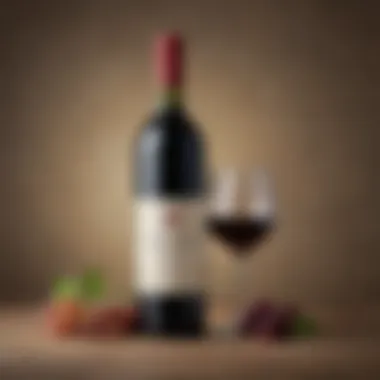

Intro
Wine is not just a beverage; it's an experience that weaves together history, culture, and ritual. The interplay between a wine bottle and the cup from which it's enjoyed adds layers of meaning and sophistication to this age-old drink. Each bottle contains more than just liquid; it embodies a story from the vineyard, a glimpse into a region's climate, and the craftsmanship of the winemaker. Likewise, the cup, whether it be a delicate crystal glass or a rustic ceramic chalice, plays a pivotal role in shaping our perceptions and enjoyment of the wine.
Throughout history, the design of wine bottles and cups has evolved significantly, influenced by regional practices, material advancements, and aesthetic trends. This exploration aims to delve into how these elements coalesce to enhance the wine-drinking experience for everyone. From the comforting clink of a glass during a toast to the visual appeal of a beautifully crafted bottle, there lies a rich tapestry of traditions and aesthetic considerations that define how wine is appreciated around the globe.
We will break down the intricate relationship between the two through various lenses: cultural significance, design philosophy, materiality, and current industry trends. This narrative will be useful for both the casual sipper and the seasoned connoisseur eager to deepen their appreciation for what lies between the bottle and the glass.
Prolusion to Wine Consumption
Wine consumption is not merely about sipping a drink; it embodies a cultural rite, a social bonding ritual, and a bouquet of experiences somehow neatly folded into a glass. As we embark on exploring the art of wine bottles and cups, it’s paramount to understand the social fabric into which wine is woven. This exploration doesn’t just scratch the surface—it delves into how wine shapes and reflects culture, tradition, and even personal identity.
Historical Context of Wine
To appreciate wine fully, one must glance back through the annals of history. Records indicate that wine production can be traced back over 8,000 years, notably in regions that now comprise modern-day Georgia and Iran. This ancient beverage played a pivotal role in rituals and celebrations, a practice that has since evolved yet retained its core significance.
Through the centuries, wine has taken on various meanings depending on geographical and cultural context. For instance, in Ancient Egypt, it symbolized wealth and divinity, while in medieval Europe, it became integral to religious ceremonies. These narratives underscore how wine is intertwined with human history, crossing paths with exploration, trade, and even conflict. The evolution of wine from a sacred commodity to a popular social drink reflects changes in societal values and norms.
The Role of Presentation in Wine Enjoyment
Moving beyond the historical, we must consider the sensory aspect of wine—how it is presented can profoundly affect one's experience. The visual appeal of a well-designed bottle or a beautifully crafted cup can tug at the heartstrings of an enthusiast as much as the flavor itself. Presentation acts as a prelude to the taste, engaging curiosity and anticipation before the first sip.
Different types of wine require careful consideration in terms of presentation. For instance, serving a robust red wine in a striking decanter when hosting a dinner party creates an atmosphere of elegance that enhances the drinking experience. Studies show that the visual and tactile elements— like the shape of the glass or the depth of color in the wine—can alter perceptions of flavor and quality.
"Wine is sunlight, held together by water."
—Galileo Galilei
This brings us to the essence of consumption; it’s a multi-sensory experience encompassing sight, touch, and taste. Understanding the art behind presentation helps wine lovers and novices alike appreciate the drink not just for what it is but also for how it’s enjoyed. Selecting the right glass, for example, isn’t just about aesthetics; it affects aroma delivery and body perception. Each element contributes to the overall experience, rendering wine not merely a beverage but a source of stories, connections, and heartfelt moments.
Understanding Wine Bottles
In the intricate world of wine, the bottle serves as more than just a container; it embodies artistry, functionality, and history. Understanding wine bottles involves delving into various aspects that influence the wine experience, from materials used to the aesthetic appeal they bring. This section will illuminate how these factors play pivotal roles in enhancing not only the perception of the wine itself but also the rituals surrounding its consumption.
Materials and Their Impact
Glass Bottles
Glass bottles are often viewed as the gold standard in wine packaging. Their transparency allows wine enthusiasts to see the rich color of the liquid inside, adding a visual dimension to the experience. Furthermore, glass is inert, meaning it doesn't interact with the wine, thus preserving the intended flavor and aroma over time. This characteristic is especially vital for aging wines, which adapt their flavors through chemical reactions that require a stable environment.
However, glass bottles can be heavy and breakable, presenting practicality issues for transportation. Yet, despite these downsides, their aesthetic value and the perception of quality keep them as the go-to choice for producers.
Plastic Bottles
Plastic bottles have made a name for themselves in recent years, primarily due to their light weight and durability. Being much less fragile than glass makes them appealing for outdoor events, picnics, or casual gatherings. Particularly in festivals, where many attendees are on the move, plastic bottles provide a practical alternative.
Nonetheless, one cannot overlook their primary drawback; plastics often leach chemicals, potentially altering the wine's flavor. While some enthusiasts appreciate the convenience, the serious wine drinkers often view plastic bottles as lacking in character.
Eco-Friendly Alternatives
As the world moves towards sustainable practices, eco-friendly wine bottles, such as those made from recycled materials or bamboo, have garnered attention. This shift is not simply a trend but a necessity for many producers aiming to reduce their environmental footprint.
These alternatives often promote a lighter carbon footprint without sacrificing the wine's integrity. However, the unique feature here is the innovation in design that appeals to both eco-conscious consumers and aesthetic seekers alike. The challenge remains in ensuring that these materials maintain the quality standards set by traditional glass bottles, yet increasing interest suggests a promising future.
Design and Aesthetics
Shape Variations
The shape of a wine bottle is more than just how it looks on the shelf. Various shapes can suggest different wine styles or regions, creating an immediate association for the consumer. For example, the slender profile of a Bordeaux bottle signals a full-bodied red, while the wider, more rounded Burgundy bottle hints at the elegance typically found in Pinot Noir.
These dimensions also play a role in storage; certain shapes allow for more efficient stacking or are better at holding corks, both of which influence how a bottle is displayed or stored at home.
Labeling and Branding
Labeling elevates the wine from mere liquid to a story encapsulated in a vessel. It informs consumers about the wine's origin, flavors, and the philosophy behind its creation. This vital element marries informative design with marketing strategy and represents a brand's identity. An engaging label can attract hesitant buyers or spark interest in new blends.
However, overly flashy labels can misrepresent the wine inside, leading to disappointment. So, the balance between attractive aesthetics and honest representation is crucial.
Cultural Influences
Exploring the cultural influences behind wine bottle design reveals an intriguing tapestry of traditions. In some regions, ceramic or clay bottles highlight ancient practices that emphasize the wine's history. Meanwhile, regions like Germany present more functional designs aimed at preserving quality in colder climates. Each choice reflects the local culture and how it shapes the wine-drinking experience.
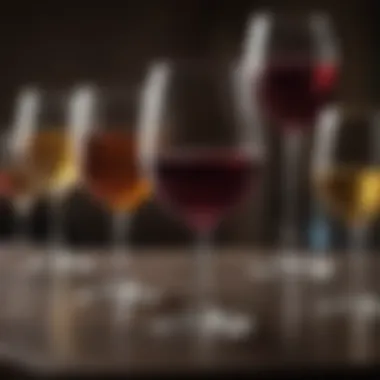
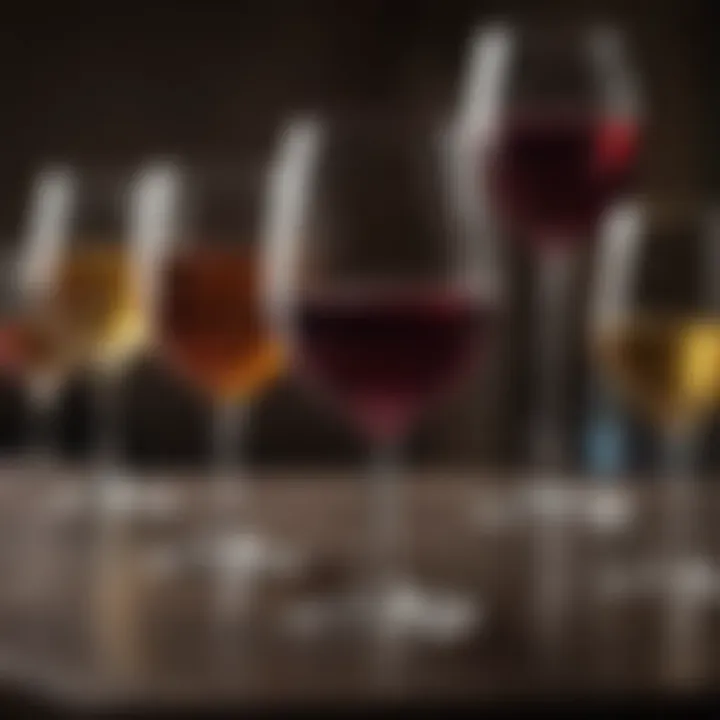
Ultimately, understanding the impact of these cultural aesthetics offers insight into the relationships between geography, tradition, and wine appreciation.
Cups for Wine: A Study of Form
The choice of cup in which wine is served plays a crucial role in the overall experience of wine consumption. Just as a painter chooses their canvas, wine enthusiasts carefully select their cups to enhance the aromas and flavors of the wine. The relationship between wine and its vessel is not just about functionality; it's about form, culture, and the senses. A well-designed cup can elevate a simple sip into an appreciation of craftsmanship and tradition.
Types of Wine Cups
Wine Glasses
Wine glasses are arguably the most recognized vessels for enjoying wine. Their design is specifically tailored to enhance the tasting experience. The most notable aspects of wine glasses are their shape and size, allowing the wine's bouquet to flourish. Narrow bowls trap aromas, while wider bowls increase surface area, encouraging oxidation. Consequently, using a wine glass is essential for anyone serious about savoring the subtleties of their drink.
The unique feature of wine glasses is their ability to ‘explode’ the flavor on the palate. This characteristic can be a game-changer, especially when sampling varieties like Cabernet Sauvignon or Chardonnay. However, one disadvantage might be the fragility of these glasses— a delicate mishap can lead to a shattered vessel and a disappointed evening.
Goblets
Goblets are less common but carry a certain gravitas when it comes to wine. Historically, they symbolize celebration and festivity, often seen at grand feasts and gatherings. Their sturdy construction and ornate nature can make drinking feel like a ritual.
The standout characteristic of goblets is their generous capacity, allowing for larger pours. This makes them well-suited for social events. However, the wide bowl does limit the focus on aroma, which could detract somewhat from a tasting event compared to the more refined experience offered by wine glasses.
Tumblers
Tumblers are a more straightforward choice, often seen in casual contexts. They break away from the formal settings and provide a relaxed way of enjoying wine. Their simple elegance makes them versatile, allowing consumers to drink wine without the fuss of traditional etiquette.
Tumblers often boast a thickness that brings durability to the forefront. This can be a benefit when enjoying picnics or outdoor gatherings. However, the downside lies in their ability to channel aromas and flavors, which may not be as pronounced compared to the other types of cups mentioned.
Material Considerations
Crystal
Crystal cups are often viewed as the epitome of luxury in the world of wine. The clarity and brilliance of crystal are unparalleled. Its enhanced refractive properties allow the wine to shine through, creating an inviting visual presentation. These cups are particularly beneficial as they can amplify the finer notes in delicate wines like Sauvignon Blanc or Pinot Noir.
However, a consideration with crystal is that it is often more expensive and less durable than ordinary glass, requiring careful handling to prevent chips or breaks.
Glass
Glass is the most popular choice for a reason. It’s practical, versatile, and generally quite affordable. The transparency of glass allows drinkers to appreciate the wine's color and clarity. The ability to mass-produce glass cups means they come in a variety of styles, shapes, and sizes, catering to different preferences.
The downside, however, is that glass, while elegant, can lack the premium feel that some wine enthusiasts seek when wanting to elevate their experience.
Ceramic
Ceramic cups introduce a unique charm to the wine drinking experience. Often hand-crafted, they come with individual touches that reflect the artisan's hand. One of the key characteristics of ceramic is its insulating properties, which can keep the wine at a consistent temperature longer than glass.
Despite their artistic appeal, ceramic lacks the transparency that glass and crystal have, which can be a disadvantage for those who enjoy visually examining their drink. Furthermore, the density of ceramic may also limit the expression of the wine’s aromas compared to its lighter counterparts.
"The cup is not just a vessel; it's the bridge between the wine and the drinker. Choosing the right cup is as important as choosing the right wine."
In summary, each type of cup brings its own set of advantages and disadvantages that impact the wine-drinking experience. As the relationship between a wine bottle and cup unfolds, it becomes apparent that thoughtful selection can lead to a more engaging and enjoyable experience.
Cultural Symbolism of Wine and Cups
Wine and its vessels carry deep cultural meanings that traverse time and geography. These not merely functional items but are imbued with traditions, rituals, and emotions. In many societies, wine signifies celebration and communion; it stands as a bridge linking the past to the present. Each culture has its unique approach to incorporating wine and its cups into their social fabric, enhancing the experience of enjoying wine beyond mere taste.
Wine in Various Cultures
Mediterranean Traditions
The Mediterranean region is often termed the birthplace of wine, with its ancient vineyards tracing back thousands of years. This area has an intrinsic connection to wine that extends to their very social interactions. It is common for gatherings to be centered around sharing a bottle, where passing the cup symbolizes sharing life’s moments.
A notable characteristic of Mediterranean traditions is the emphasis on communal drinking. Gatherings often involve sharing stories and laughter over a bottle of robust red or crisp white, elevating the entire experience. It’s not merely about the wine; it encapsulates a lifestyle that celebrates connection and community.
One unique feature is the wild variety of local grape types, which influence the flavor profiles significantly. Embracing local wines promotes not only enjoyment but also sustains regional identities. The downside? Such a rich variety may bewilder the uninitiated, creating barriers in accessibility for new wine drinkers.
Asian Practices
In Asia, the influence of wine—particularly in countries like China—takes on a distinctive approach. Here, wine serves not only as a beverage but also as a means of fostering respect during rituals and ceremonies. The careful selection of both wine and cup plays a crucial role in these practices.
A key characteristic of Asian wine practices is the custom of toasting as a sign of goodwill. This ritual fosters relationships, as each clink of the cups represents a moment of shared joy and respect. Typical gatherings involve meticulous rituals around serving and pouring, highlighting the cultural emphasis on hierarchy and etiquette.
Notably, the unique aspect of rice wine in many Asian cultures adds depth to this experience. Its sweetness contrasts with grape wines and could appeal to different palates. However, it can also alienate traditional wine enthusiasts who might prefer grape varieties, causing a cultural divide within wine appreciation.
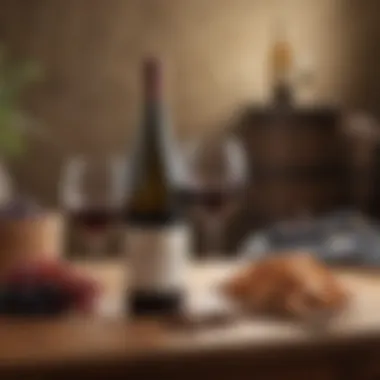
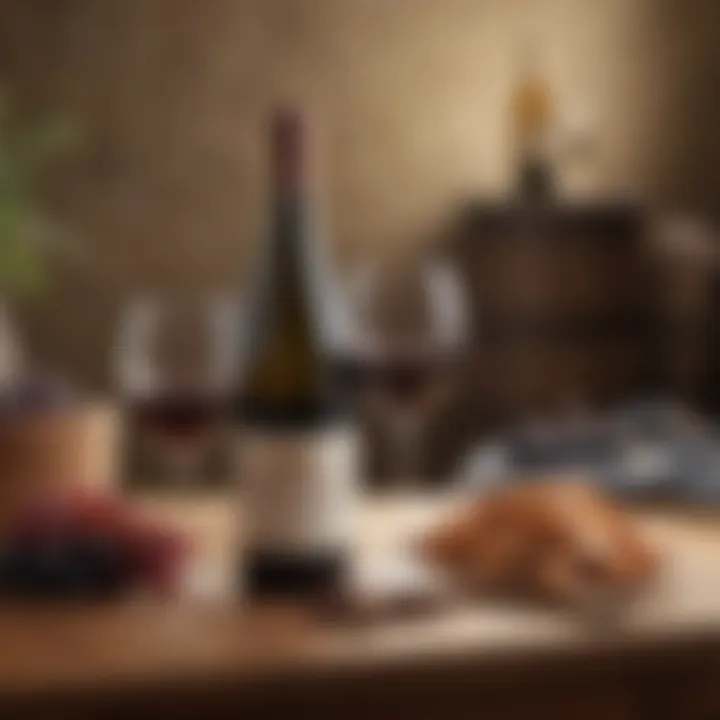
New World Approaches
With wine production taking root in regions like California, Australia, and Chile, New World wineries represent a shift toward innovation while still honoring traditions. Each bottle tells a modern story intertwined with the old, and these cultures often take a more casual approach to wine drinking compared to their Old World counterparts.
The approachable nature of New World wines, characterized by fruit-forward profiles, tends to draw in younger consumers. This refreshing take creates a relaxed atmosphere around wine enjoyment, making it accessible for newcomers.
However, there’s a worry that this laid-back style may overlook the craftsmanship of traditional wine-making practices. Integrating innovative styles, like alternative closure methods, while maintaining quality is pivotal for sustaining long-term appreciation.
Rituals and Celebrations
Tasting Events
Wine tasting events serve as a gateway for enthusiasts to explore the intricate attributes of various wines. These events cultivate an environment where education and enjoyment intersect, helping demystify wine for the general public. The unique aspect of tasting events is the opportunity to compare wines from different regions and producers side by side, enhancing the consumer's understanding.
Such events are particularly popular because they foster interaction among participants, transforming tasting into a communal experience. However, they can often become overwhelming given the diversity of options, sometimes causing confusion for novice wine drinkers.
Weddings and Anniversaries
In many cultures, wine is an integral part of celebrations such as weddings and anniversaries. It symbolizes love and togetherness, with toasts made to cherish lasting bonds. This reinforces the idea that wine transcends mere drinking; it embodies a spirit of unity and shared joy.
A unique feature of using wine during these events is the variety of rituals associated, from choosing a particular vintage to crafting personalized toasting glasses. This adds a layer of significance to the occasion. However, the pressure to select the “perfect” wine can be daunting for many, often overshadowing the true essence of celebrating the moment.
Culinary Pairings
Culinary pairings highlight the harmony between food and wine, elevating the dining experience. The practice of matching specific wines with certain dishes enhances flavor profiles and often introduces individuals to new and exciting combinations. Pairing wine with food is a celebration of a different kind, offering a sensory pleasure that can be deeply satisfying.
The key characteristic here is the sheer diversity of pairings available, influenced heavily by regional cuisines. Every cuisine seems to bring its preferred wine styles, creating room for exploration. Still, sometimes unwarranted complexities arise, making fewer experienced diners feel intimidated about what to pair with their meal.
In understanding the cultural symbolism of wine and cups, we uncover how these elements are not just for consumption but serve as vessels for connection, reverence, and celebration across the globe.
Practical Considerations
When it comes to wine, several practical considerations underlie the experience of both storage and serving. Not only do these elements influence how a wine develops over time, but they also maximize the enjoyment of your favorite vintages. Understanding the specific aspects of bottle positioning, temperature control, and serving techniques can elevate a casual glass to a sumptuous occasion.
Storage and Preservation
Wine needs proper care to maintain its quality. Improper storage can lead to cork damage and oxidation, ultimately ruining the experience. Two main aspects come into play: bottle positioning and temperature control.
Bottle Positioning
Positioning wine bottles horizontally is a common practice among connoisseurs. This technique keeps the cork moist. A moist cork is crucial as it prevents air from sneaking in, which can spoil the wine. Many wine lovers consider this a beneficial choice for long-term storage.
Advantages of horizontal positioning:
- Maintains cork integrity
- Prevents oxidation
- Saves space because it can be stacked
However, this might not be the most practical option for an extensive collection without proper racks or temperature zones. Some argue upright positioning allows easier monitoring, but at the risk of dry corks.
Temperature Control
The ideal storage temperature for wine generally hovers around 55°F (13°C). Fluctuations can hurt the wine flavors and aromas; hence, maintaining consistent environmental conditions is essential. Keeping bottles in a dedicated wine fridge can serve this purpose, offering a controlled atmosphere more so than standard kitchen settings.
Benefits of maintaining the ideal temperature:
- Preserves wine character
- Prevents spoilage
- Enhances aging potential
Attaining this level of precision might require investment in equipment, which is not always feasible for every wine enthusiast. While no one wants to break the bank, being aware of potential disadvantages can help you make informed choices.
Serving Techniques
Once you’ve preserved the wine, how it's served can either complement or detract from the experience. Serving techniques include careful pouring, decanting, and choosing the right cup for the occasion.
Pouring Techniques
Pouring wine properly is an art in itself. A common recommendation is to fill a glass only a third full, allowing space for the aromas to develop. This is a favored, practical choice for anyone looking to enhance their tasting experience.
Why is that important?
- Improves aroma concentration
- Prevents spills
- Ensures even distribution of taste
Nevertheless, pouring can be tricky at times. If not done correctly, it can lead to spilling, which might spoil fine upholstery or carpets. If you’re wit the right glass, it’ll give the wine air while allowing an aesthetically pleasing presentation.
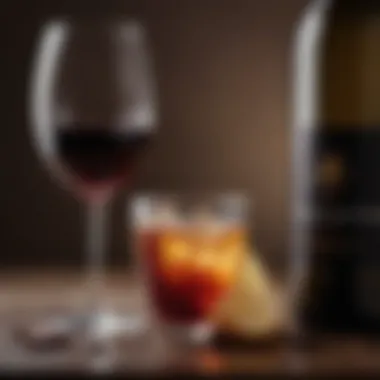
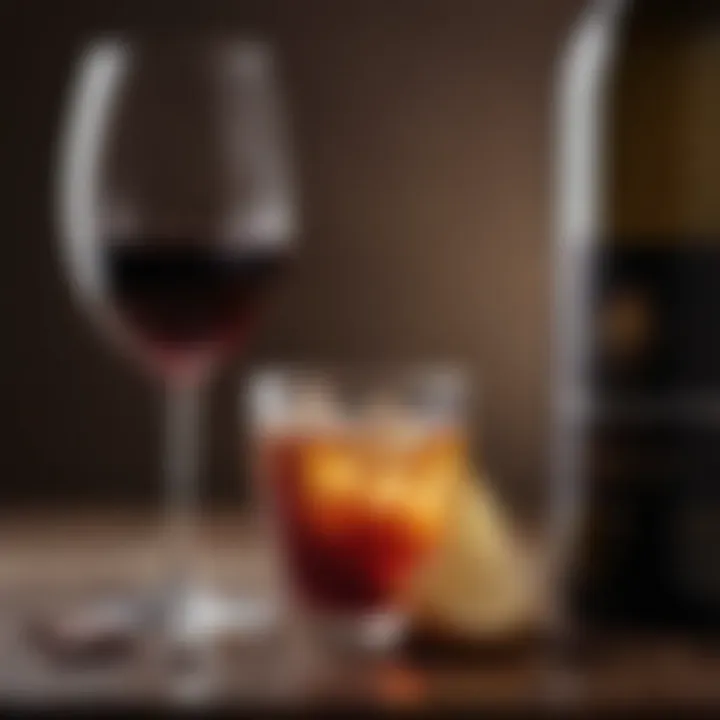
Using Decanters
Decanting wine serves two purposes: aeration and sediment separation. It involves transferring the wine from its bottle into a decanter allowing it to breathe. This technique is especially beneficial for older vintages, helping them unlock hidden aromas and flavors.
Key characteristics of decanters:
- Enhance texture and flavor
- Conceal any sediment
- Provide elegant presentation
That said, not all wines need decanting, and some can actually lose flavor if exposed to air for too long. This highlights why understanding your wine is a significant asset.
Choosing the Right Cup
Selecting a cup may sound trivial, but the shape and material can dramatically influence how the wine presents itself. Different wines benefit from different shapes: tall glasses may be more suitable for elegant whites, while rounder bowls are perfect for fuller-bodied reds.
Why is it so pivotal?
- Captures aroma
- Aids in temperature retention
- Determines aesthetic appreciation of the drink
Of course, with all these choices, it can get overwhelming; too much emphasis on specific cups can sometimes feel snobbish. However, a bit of consideration goes a long way in appreciating the craft behind each sip.
Innovations in Wine Vessel Design
Innovations in wine vessel design are like the hidden gems in a vineyard, offering more than just aesthetic appeal. They represent a fascinating evolution influenced by changing consumer demands, environmental concerns, and technological advances. It's not just about what's in the bottle anymore; it's about how it's presented, stored, and consumed. This section shines a light on modern trends and emerging styles that not only enhance the physical experience of enjoying wine but also resonate with contemporary values of sustainability and personalization.
Modern Trends in Bottling
Sustainable Practices
The push for sustainable practices in wine bottling has taken the industry by storm. It's a movement that marries ecological responsibility with the wine-drinking experience. More wineries are opting for lightweight bottles, which reduce the carbon footprint during transportation. This is not just an idea; it carries substantial weight in today's climate-conscious world, marking it an attractive option for both producers and consumers alike.
A key characteristic of sustainable practices is their contribution to reducing waste. One unique feature is the shift from traditional glass to recycled materials, which conserves energy and resources. The advantages of this approach are manifold; not only do these practices minimize environmental impact, but they also often appeal to a market that values artisanal and eco-friendly production methods. It's a modern way to sip with a clear conscience - and let’s face it, who doesn’t want that?
Smart Bottles
Enter the realm of smart bottles, where technology intertwines with tradition. These innovative vessels are designed to enhance wine preservation and management. A distinct feature of smart bottles is the built-in sensors that monitor oxygen exposure, temperature, and even track the life of the wine once opened. The benefits of integrating technology into wine storage are significant; wine enthusiasts can ensure their favorite vintages stay at peak quality and flavor.
Smart bottles not only simplify the wine experience for casual drinkers, but they also pave the way for more informed consumption. However, the flip side may include initial costs and tech dependencies that might deter traditionalists who cherish classic methods. But for those willing to embrace tech, it opens a whole new world of wine care.
Emerging Styles of Cups
3D-Printed Cups
In the realm of wine cups, 3D printing has emerged as a game changer. The beauty of 3D-printed cups lies in their customizability. Patrons can now enjoy cups designed to fit their style or even specific wine characteristics. With the ability to create unique shapes and patterns, these cups stand out at any table, offering that sense of individuality that connoisseurs often crave.
Key characteristics include the versatility of materials used, allowing for both plastic and bio-degradable options. The unique feature of 3D-printed cups is their capacity for personalization, making each piece a one-of-a-kind creation. However, challenges lurk, such as the sustainability of plastic prints and water resistance, which can raise questions about practicality when pouring a fine cabernet.
Artisanal Designs
Artisanal designs in wine cups bring a touch of craftsmanship back to the drinking experience. Many crafters have gained recognition for unique styles that reflect cultural heritage and traditional techniques. The primary characteristic of these designs is their handcrafted nature, which results in distinct imperfections that often tell a story.
Artisanal cups offer uniqueness and character, serving not just as vessels but as conversation starters. Their handmade quality can elevate the drinking experience, turning a simple pour into a moment of indulgence. Yet, some may find these cups less uniform in quality and more costly than mass-produced counterparts, leading to a divide in consumer preference. Still, the allure of artisanal touches often outweighs this downside for many wine lovers.
"In the world of wine, every detail matters, from the bottle to the cup, each innovation serves to elevate the experience."
In wrapping up this exploration of innovations in wine vessel design, it’s clear that the landscape of wine enjoyment is changing. Whether through sustainability, technology, or craftsmanship, every new trend has its purpose, reflecting our evolving relationship with wine and the world around it.
End
In concluding our exploration of wine bottles and cups, it’s essential to grasp not only what has been discussed but the role each element plays in enhancing the experience of wine consumption. The act of drinking wine transcends mere hydration; it involves a multi-sensory journey that entwines sight, smell, taste, and even touch. Each component — from the bottle to the cup — contributes significantly to the overall ritual of enjoyment.
The Future of Wine Presentation
The future of wine presentation is brimming with possibility. With rising environmental concerns, sustainability continues to be a hot topic — leading designers to rethink traditional materials. Glass bottles are being offered in recycled forms, or sometimes even substituting with eco-friendly options like bag-in-box systems that reduce waste. Innovations like smart bottles, which can monitor wine quality and share data with users through mobile apps, are expected to merge technology and tradition seamlessly.
Changes in consumer behavior, particularly among younger wine drinkers, are also shaping the landscape. They seek unique experiences and personalization. This has resulted in playful, artistic designs that encourage creativity. Unconventional shapes and bright colors are becoming more popular, allowing wine enthusiasts to express their individuality.
Moreover, contemporary cultural shifts are pushing for inclusivity and accessibility in the wine space. Innovative cups, such as those that may be crafted from recycled materials or 3D-printed designs, are emerging. These cups not only serve as functional vessels but also as conversation starters that reflect values deeply rooted in community and sustainability.
Personal Reflections on Wine Enjoyment
When one reflects on wine enjoyment, personal experiences often shape preferences. For many, the ambiance in which wine is consumed infuses the tasting experience with meaning. Equipment choices, such as glasses or cups, can evoke memories or signify particular occasions. Remember that evening with friends, pouring from a striking bottle into beautifully crafted crystal glasses. It’s not just about drinking wine; it’s about the journey, the stories shared, and the feelings evoked.
This multidimensional aspect extends to the appreciation of much more than just the wine itself — it’s intertwined with the memories we create and the rituals we establish around it. The clinking of glasses and the passing of a bottle are modern-day ceremonies, filled with significance. Every wine lover has a unique narrative guided by personal preferences, cultural context, and the vessels they choose for their wine.
"Wine is sunlight, held together by water." This line encapsulates the beauty surrounding wine and its vessels; each sip invites us to reflect on our connections to both the liquid and the people we share it with.
As we move forward, it’s essential to recognize that each cup and bottle represents a blend of artistry and functionality. Those choices enrich our experiences and expand our horizons, allowing us to savor not just the wine, but the life moments that accompany it.





